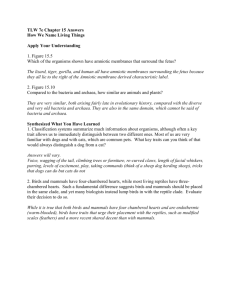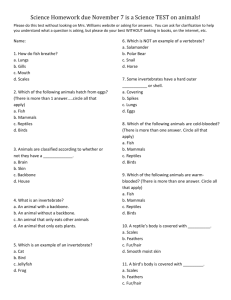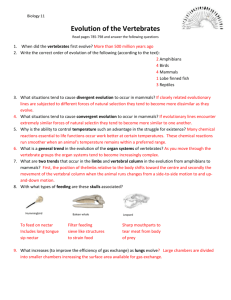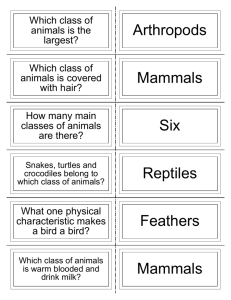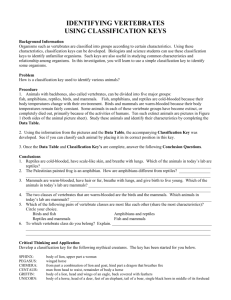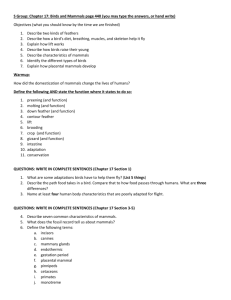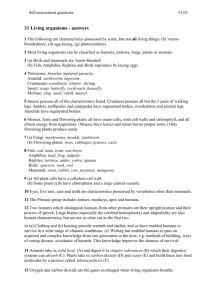Comparative Vertebrate Anatomy, 2nd hour exam Nov
advertisement
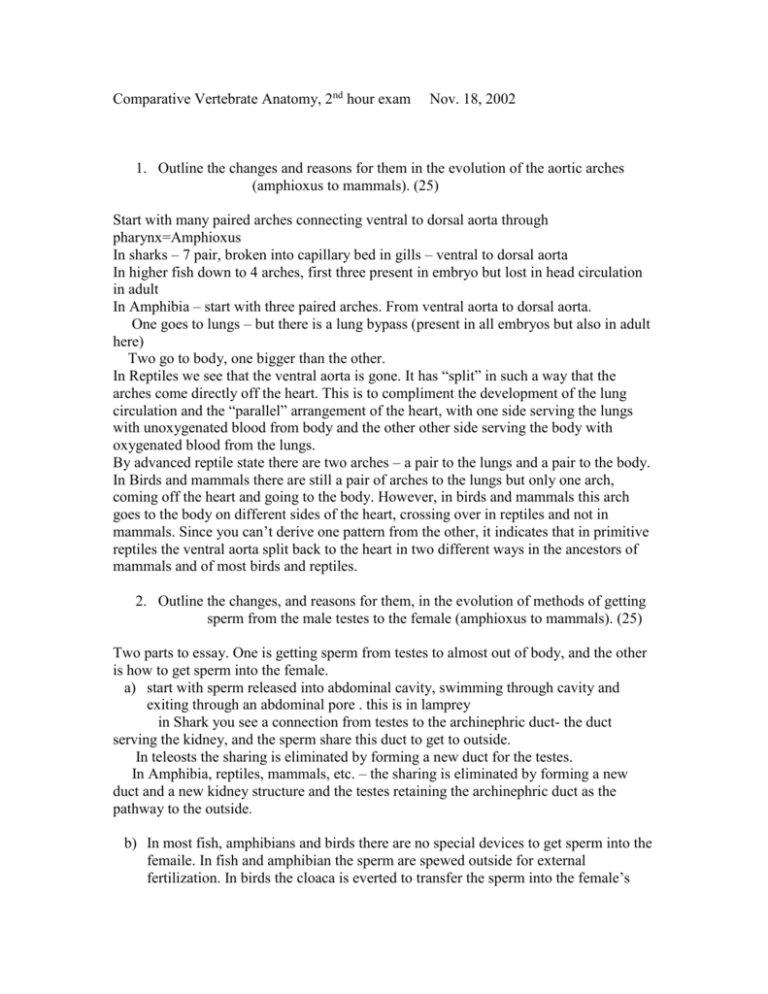
Comparative Vertebrate Anatomy, 2nd hour exam Nov. 18, 2002 1. Outline the changes and reasons for them in the evolution of the aortic arches (amphioxus to mammals). (25) Start with many paired arches connecting ventral to dorsal aorta through pharynx=Amphioxus In sharks – 7 pair, broken into capillary bed in gills – ventral to dorsal aorta In higher fish down to 4 arches, first three present in embryo but lost in head circulation in adult In Amphibia – start with three paired arches. From ventral aorta to dorsal aorta. One goes to lungs – but there is a lung bypass (present in all embryos but also in adult here) Two go to body, one bigger than the other. In Reptiles we see that the ventral aorta is gone. It has “split” in such a way that the arches come directly off the heart. This is to compliment the development of the lung circulation and the “parallel” arrangement of the heart, with one side serving the lungs with unoxygenated blood from body and the other other side serving the body with oxygenated blood from the lungs. By advanced reptile state there are two arches – a pair to the lungs and a pair to the body. In Birds and mammals there are still a pair of arches to the lungs but only one arch, coming off the heart and going to the body. However, in birds and mammals this arch goes to the body on different sides of the heart, crossing over in reptiles and not in mammals. Since you can’t derive one pattern from the other, it indicates that in primitive reptiles the ventral aorta split back to the heart in two different ways in the ancestors of mammals and of most birds and reptiles. 2. Outline the changes, and reasons for them, in the evolution of methods of getting sperm from the male testes to the female (amphioxus to mammals). (25) Two parts to essay. One is getting sperm from testes to almost out of body, and the other is how to get sperm into the female. a) start with sperm released into abdominal cavity, swimming through cavity and exiting through an abdominal pore . this is in lamprey in Shark you see a connection from testes to the archinephric duct- the duct serving the kidney, and the sperm share this duct to get to outside. In teleosts the sharing is eliminated by forming a new duct for the testes. In Amphibia, reptiles, mammals, etc. – the sharing is eliminated by forming a new duct and a new kidney structure and the testes retaining the archinephric duct as the pathway to the outside. b) In most fish, amphibians and birds there are no special devices to get sperm into the femaile. In fish and amphibian the sperm are spewed outside for external fertilization. In birds the cloaca is everted to transfer the sperm into the female’s cloaca for internal fertilization. In sharks, claspers-projections on the pelvic fins provide a path for sperm to follow for internal fertilization. In reptiles there are hemipeni which serve the same purpose. In mammals and turtles there is a penis – a single projection which sperm can swim on or through. Penis shape is roughly comparable to vagina shape in mammals – y shaped if a double vagina, single if a single vagina. c) 3. For each of the following, explain its origin, purpose for existence, and or special abilities. (10 each) a. mesanephric kidney the embryonic kidney in reptiles, birds and mammals which is non functional as a kidney but serves as an organizer to lay down the archinephric duct, which will become the tube system for the gonad. b. air bladder a derivative of the lung. In teleosts paired outpocketings of the pharynx start as a lung would, but loose their connection to the pharynx and fuse dorsally, forming an internal sac. By regulating the amount of gas (nitrogen) in the sack, fish can maintain hydrostatic balance in the ocean. c. azygous vein an unpaired vein along the back of mammals that receives blood from the trunk somites (ribs, muscles, etc) and dumps into the anterior vena cava (precava). It is a remnant of the original posterior cardinal vein, which appears in the early embryo of mammals but which is replaced by the vena cava as the main channel for blood return to the heart as development changes the heart and circulation from a bilateral system to an unpaired asymmetric system. .I d. gizzard in birds the bird stomach, possessing a muscular wall which, with the aide of stones swallowed by the bird, allows grinding of hard substances like seeds. e. lung in birds similar to all other lungs in its origin (out pocketing of the pharynx ) but unique in that it is a flow-though system rather than a one way pocket system. Flow through is possible because of air sacs anterior and posterior to the lungs. The one way flow of air through the lungs allows flowcounterflow exchange with the blood stream and is very efficient, allowing the lung to be reduced in size and weight – good for birds that need a light body to fly.

